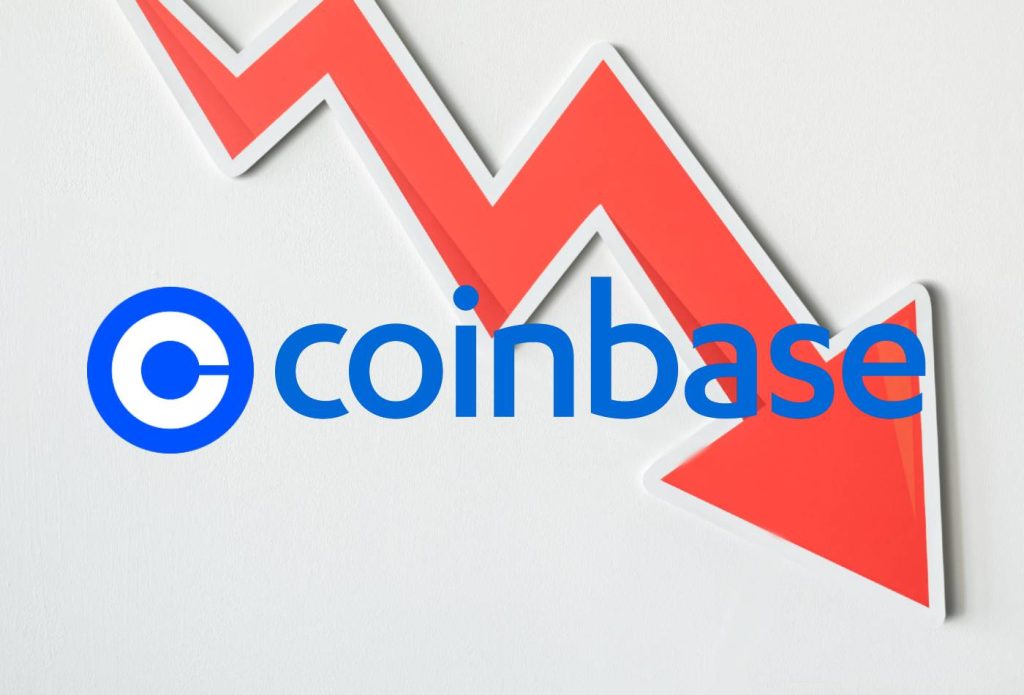In a move that sent shockwaves through the crypto world, Coinbase announced it would be making major changes to its corporate structure following its latest quarterly report. The company warned customers about potential risks that might arise should the exchange go bankrupt. While the company argues that the disclosure was sole due to new regulations, it has made many users wonder what would happen to their assets if Coinbase went bankrupt. This has become a major point of concern due to the popularity of the exchange and its high number of users.
Table of contents
- What Is Happening With Coinbase?
- What Can Happen If Coinbase Goes Bankrupt?
- What Will Happen To My Assets If Coinbase Goes Bankrupt?
- How Can I Protect My Assets If Coinbase Goes Bankrupt?
- How To Withdraw Your Assets From Coinbase If It Goes Bankrupt
- Top Crypto Wallets To Transfer Your Assets To
- Conclusion
What Is Happening With Coinbase?
Currently, the crypto market is experiencing a significant downturn and what is often referred to as a crypto winter. This means that there are significant price drops across the market, affecting almost all currencies and companies in the sector.
During its latest quarterly report in May 2022, Coinbase outlined a scenario in which the company goes bankrupt and explained what would happen with users’ assets. While this was done purely due to regulatory requirements, it does come at a turbulent time. The document states that users will likely become general unsecured creditors, meaning that they will most probably lose access to any assets they have stored on the platform. Coinbase would then have to repay them what is owed. However, in such cases, unsecured creditors are usually the last ones to receive compensation. They end up having to wait for years, going through lengthy legal processes.
Additionally, the same quarterly report also announced a net loss of almost $430 million during the quarter ending March 31, 2022. This is a significant hit to Coinbase and serves to show that the crypto market has lost quite a bit of momentum. The loss also added to the sense of uncertainty surrounding the crypto exchange and caused further concerns among users.
Finally, on June 14, 2022, Coinbase’s CEO Brian Amstrong announced via an internal letter and later on Twitter that the company would be letting go 18% of its workforce. This move is consistent with a wider trend in the sector where most companies are scaling back operations in anticipation of a recession. However, as they come just days after the damning quarterly report, the cutbacks only caused further concerns among users.
1/ Today I shared that I've made the difficult decision to reduce the size of our team at Coinbase by about 18%. The broader market downturn means that we need to be more mindful of costs as we head into a potential recession.
— Brian Armstrong – barmstrong.eth (@brian_armstrong) June 14, 2022
What Can Happen If Coinbase Goes Bankrupt?
It is still not clear what exactly will happen if Coinbase declares bankruptcy. This is because while the service would likely fall under the same rules as any other online trading platform, it is still unregulated. As such, many variables and possibilities remain uncertain.
The largest concern at the moment remains user assets, which are stored on so-called custodial wallets. These are wallets that the platform operates for its customers and executes transactions in their name. As such, Coinbase users who have their assets stored on the platform do not have direct control over them. In the case of bankruptcy, they will likely lose control over these assets and won’t be able to withdraw them. This is a huge problem as Coinbase currently holds over $256 billion in user assets as of March 2022. With such wide exposure, a very large number of investors are susceptible to significant losses.
Related: Why Do People Hate NFTs So Much?
What Will Happen To My Assets If Coinbase Goes Bankrupt?
There is no clear consensus about what will happen if the unthinkable occurs and Coinbase does go bankrupt. However, the general thinking among most financial and legal experts is that users will likely become general unsecured creditors. Even Coinbase itself stated in its disclosure that this is the most likely scenario.
As general unsecured creditors, the company will owe users their assets or a cash equivalent. However, because they are general and unsecured, users would be the last in line to receive compensation. They would be behind senior debtholders as well as any banking and legal firms that the company has employed or owes money to.
General unsecured creditors often have to wait months or even years to receive any compensation. They also have to go through a rigorous process of filling out and submitting written requests within tight legal and time-sensitive constraints. And even after all of this, in most cases, such creditors receive only part of what they are owed. This would be less than ideal for most Coinbase users.
Asset Ownership Following A Potential Bankruptcy
Asset ownership is another major cause for concern in case of bankruptcy. If you are storing your assets in your Coinbase account, then they are in what is known as a custodial wallet. Custodial wallets are wallets that the exchange operates for its user. Instead of having direct access to their assets, users put in requests, and the platform executes the desired action in their name. In normal circumstances, this works mostly without issues as the platform has little incentive to refuse service.
However, in the case of bankruptcy, users will likely be unable to withdraw their assets from their Coinbase account’s custodial wallet. Because the company is the entity that has control over these wallets, it can refuse to transfer user assets to outside wallets, citing various reasons. These can include insufficient cash flow, an overloaded system due to increased activity, increased volatility, and various others.
Whatever the reason may be, the main takeaway is that users will likely be unable to withdraw their assets. As such, those who are concerned about the exchange’s future should take precautions to ensure their ownership of their assets.
How Can I Protect My Assets If Coinbase Goes Bankrupt?
There are various steps that you can take to protect your assets in case of possible bankruptcy. However, these are mostly precautionary measures that you must take prior to any declaration of bankruptcy. This is because users will be left with very little recourse after the fact and can only do so much to recover any assets they might have with the platform.
Many of these precautions are also best practices that crypto users should employ even without the threat of looming bankruptcy. The best way to ensure your assets is to transfer them to a third-party wallet. This would give you complete control over your assets. It will also ensure that they are not tied to the prosperity of any crypto exchange or platform.
There is a wide variety of third-party wallets that you can use to secure your assets. These include both software and physical ones. Each one of these offers a unique set of features alongside its own pros and cons.
How To Withdraw Your Assets From Coinbase If It Goes Bankrupt
In order to transfer your assets out of Coinbase, you will need to do so before it potentially goes bankrupt. This is because you won’t be able to do so after the fact. You will also need a third-party crypto wallet to transfer your assets to.
Once you have met all of these requirements, you can easily transfer your assets out of Coinbase. Below, we have outlined how to do so in 5 easy steps.
- From your Coinbase home screen, click “Send” from the left side of the screen.
- Next, go to the “Send” tab and enter the type and amount of cryptocurrencies you would like to transfer. Here, you can easily toggle between their value in fiat money or the number of tokens.
- Once you have selected the desired amount, enter the crypto address of your dedicated wallet. This will be a long string of numbers and letters.
- Now click “Pay With” and choose the asset to send the funds from.
- Finally, click on “Continue” and review the details of the transfer. If everything is ok, click on “Send Now” to confirm the transfer.
For a more in-depth look at how to transfer assets out of Coinbase, check out our dedicated article on Coinbase withdrawals.
Top Crypto Wallets To Transfer Your Assets To
Metamask

Metamask is a free and open-source cryptocurrency wallet that can be used to store, send, and receive digital currencies. It is available as a browser extension for Google Chrome, Mozilla Firefox, and Brave. You can also get it on your iOS or Android device as a dedicated app.
Metamask allows users to interact with decentralized applications (dApps) on the Ethereum blockchain. It also allows users to manage their crypto assets in one place. Additionally, Metamask provides a secure way to access dApps without having to enter your private keys or passwords. Metamask is a great option for those looking for a simple and secure way to use dApps and manage their Ethereum-based assets.
However, the one drawback of this incredibly popular wallet is that it only supports Ethereum and ERC-20 tokens based on the Ethereum network. While this still means that the wallet supports hundreds of cryptos and tokens, it also greatly limits its functionality. Because some of the most popular cryptos like Bitcoin do not run on the Ethereum blockchain, you won’t be able to use them with Metamask.
Exodus

Exodus wallet is a desktop wallet available for Windows, Linux, and Mac users. It is also available as a mobile wallet app for Android and iOS devices. The platform also has a built-in exchange that allows users to trade between different cryptocurrencies. As such, Exodus allows users to hold multiple cryptocurrencies in one wallet, giving it an advantage over single-network wallets like Metamask.
Because Exodus is a free software wallet, it is very accessible and easy to use. However, the Exodus is so widespread not only due to its availability but also because it has a rich and versatile set of features that users can take advantage of. The platform offers a variety of services, such as a crypto exchange, crypto storage, staking, lending, market monitoring tools, and more. Exodus wallet also supports over 200 different cryptocurrencies. These include Bitcoin, Ethereum, Litecoin, Dash, Bitcoin Cash, EOS, Monero, and Dogecoin, just to name a few.
As such, Exodus is a great choice for users who wish to manage a diverse portfolio of many different cryptocurrencies and assets. While it is generally considered to be highly secure, Trezor is still a software wallet. This means that it does have some shortcomings in the security sector. While it is definitely safe to store your assets in the Exodus wallet, as a software wallet, it is susceptible to various online attacks and remote access. This is something that you should take into consideration when choosing a wallet to store your assets in.
Trezor

Trezor is a hardware cryptocurrency wallet that launched in August 2014. As such, it is one of the most secure options when it comes to crypto wallets. Because Trezor functions as an authentication device, you need to have it on hand in order to gain access to your assets. Without the device, you won’t be able to open your wallet. This makes unauthorized access incredibly difficult and greatly decreases the chances that someone will breach your wallet.
The wallet itself supports over 1000 different cryptocurrencies and tokens. This allows users to maintain a diverse portfolio of assets without the need to have multiple wallets. Additionally, support for new tokens is added on a regular basis. Trezor also supports Metamask integration. By connecting the two services, users will be able to take advantage of the versatility of Metamask and combine it with the security of Trezor. By connecting Metamask, Trezor also allows for NFT support, further expanding the supported assets.
The Trezor wallet connects to your computer or phone via USB and allows you to store, send, and receive cryptocurrencies. The Trezor wallet also provides a number of security features, including a pin code and passphrase protection. The one drawback of a hardware wallet is that you need to have it on hand at all times if you wish to access your wallet. This can be a bit of a hassle at times but is a small price to pay for the added security.
Conclusion
As you can see, there are many uncertainties currently surrounding Coinbase. The popular exchange has suffered major losses, and one of its main sources of income – trading has been significantly impacted. This is mainly due to the large-scale downturn in the crypto market. With prices dropping across the board, companies and investors alike are scaling back operations and bracing for a crypto winter.
An example of this is Coinbase’s recent cutting of 18% of its workforce. This comes on the heels of the company’s latest quarterly report, in which Coinbase outlined the risks and effects in case of bankruptcy. All of this combined stoked fears amongst users who are now wondering is Coinbase going bankrupt. While the company’s CEO is adamant that Coinbase is doing better than ever, these concerns are not unfounded, as the sense of uncertainty is palpable in the air across the entire crypto industry.
Read Next: How Secure Is Metamask?





